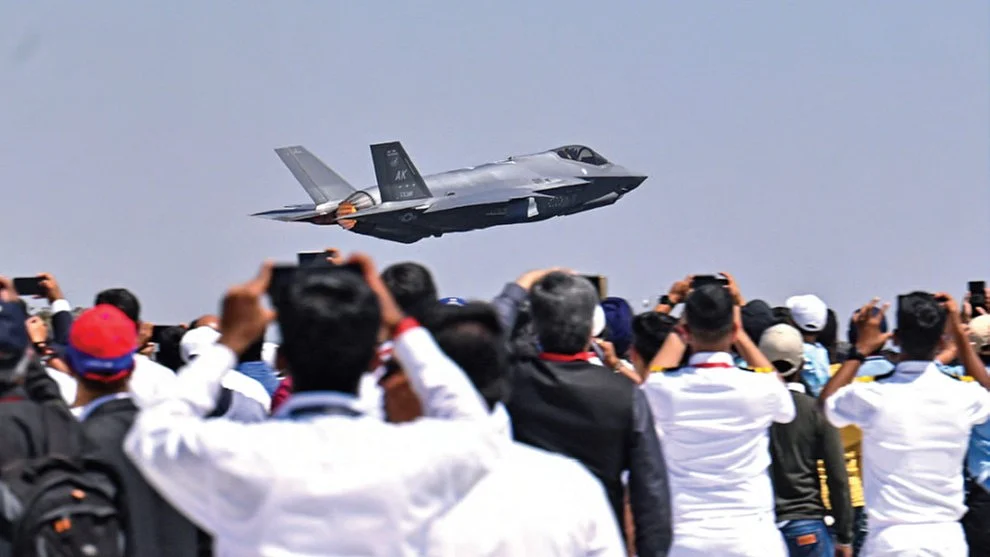Opinion
Another white elephant India doesn’t need
Why India should avoid the strategic blunder of buying the F-35 stealth aircraft under US pressure

On Prime Minister Narendra Modi’s recent visit to Washington, US President Donald Trump made a surprising, reportedly unscripted announcement: India was to purchase F-35 fighter jets from the US. While Indian foreign ministry officials later played down the announcement as premature, the mere mention of such a deal warrants scrutiny.
The F-35, manufactured by Lockheed Martin, is one of the most controversial and expensive weapons systems in modern history. For India, given its defence requirements and strategic vision emphasising self-reliance, the acquisition of the F-35 under US pressure would be a grave mistake.
Not only will it strain India’s defence budget but also undermine its strategic autonomy, compromise operational requirements and divert resources from more pressing priorities.
The F-35 Joint Strike Fighter is marketed as a fifth-generation, multirole stealth aircraft capable of dominating the skies, but the reality is more complicated. The programme has been plagued by cost overruns, technical glitches and operational limitations.
With a price tag of more than $100 million per unit (excluding lifetime maintenance and operational costs), the F-35 is one of the most expensive fighter jets ever built. For India, which operates on a limited defence budget and faces multiple security challenges, such an investment would be a financial drain and irresponsible.
Besides, the F-35’s performance has been called into question by military analysts and even US officials. The aircraft has faced issues with its software, engine reliability and stealth capabilities. In 2024, Pentagon’s Director, Operational Test and Evaluation, reported that the F-35 still had hundreds of unresolved deficiencies, some of which could jeopardise missions.
Published: undefined
For India, which needs reliable, battle-ready platforms to counter threats from China and Pakistan, the F-35’s technical shortcomings should be a red flag.
India’s defence strategy is shaped by its unique geopolitical environment. The country faces a two-front challenge from China and Pakistan, both of which have invested heavily in their military capabilities. To counter these threats, India needs versatile and reliable yet cost-effective platforms that can operate in diverse terrains, from the Himalayas to the deserts of Rajasthan. The F-35, designed primarily for US and NATO operations, is ill-suited to India’s specific requirements.
For instance, the F-35’s single-engine design raises concerns about its performance in high-altitude environments, such as the Himalayan region, where India faces a significant threat from China. China’s J-20 fighter jets, which can fly at the edge of space, hold a significant altitude advantage over the F-35 in any potential engagement.
Additionally, the F-35’s reliance on advanced logistics and maintenance infrastructure would place an enormous burden on India’s defence establishment, which is already struggling to maintain its existing fleet.
One of the cornerstones of India’s foreign policy and defence strategy is strategic autonomy. This principle emphasises self-reliance and the ability to take independent decisions in ‘national interest’. Acquiring the F-35 under pressure from the Trump administration would compromise this autonomy in several ways.
First, the F-35 comes with stringent end-user agreements that would give the US significant control over how and where the aircraft can be deployed. This would limit India’s operational flexibility and could create frictions in situations where Indian and US interests diverge. For example, if India were to use the F-35 in a conflict with China, the US might impose restrictions to avoid escalating tensions with Beijing.
Published: undefined
Second, the F-35’s software and systems are heavily encrypted, meaning India would have limited access to the aircraft’s core technology. This would hinder India’s ability to integrate the F-35 with its existing defence infrastructure or develop indigenous upgrades.
India needs to prioritise its resources to further develop its domestic defence industry, with projects like the Tejas Light Combat Aircraft (LCA) and the Advanced Medium Combat Aircraft (AMCA). However, the acquisition of the F-35 would divert resources and attention away from these critical indigenous programmes. By investing in the F-35, India would risk undermining these homegrown initiatives, perpetuating its dependence on foreign suppliers, and stifling innovation in its defence sector.
India’s defence budget, while substantial, is not unlimited. The country faces competing demands for resources, from modernising its armed forces to addressing social and economic challenges. The F-35’s exorbitant cost would strain India’s finances, leaving less room for other critical investments. Allocating a significant portion of the defence budget to the F-35 would force India to make difficult trade-offs, potentially leaving other branches of the military underfunded.
The purchase of the F-35 would also have broader geopolitical implications for India. While the US is an important strategic partner, India has traditionally maintained a balanced approach in its foreign policy, engaging with multiple powers, including Russia and France. The F-35 deal, seen as a move to align more closely with the US, could strain India’s relations with other key partners.
Instead of succumbing to US pressure and purchasing the F-35, India should focus on strengthening its indigenous defence capabilities and pursuing partnerships that align with its strategic interests. The F-35 fighter jet, despite its advanced features, is a poor fit for India’s defence needs and strategic priorities. Instead of this flashy but problematic platform, India should focus on strengthening its indigenous capabilities and building partnerships that align with its long-term interests.
(Ashok Swain is a professor of peace and conflict research at Uppsala University, Sweden)
Published: undefined
Follow us on: Facebook, Twitter, Google News, Instagram
Join our official telegram channel (@nationalherald) and stay updated with the latest headlines
Published: undefined